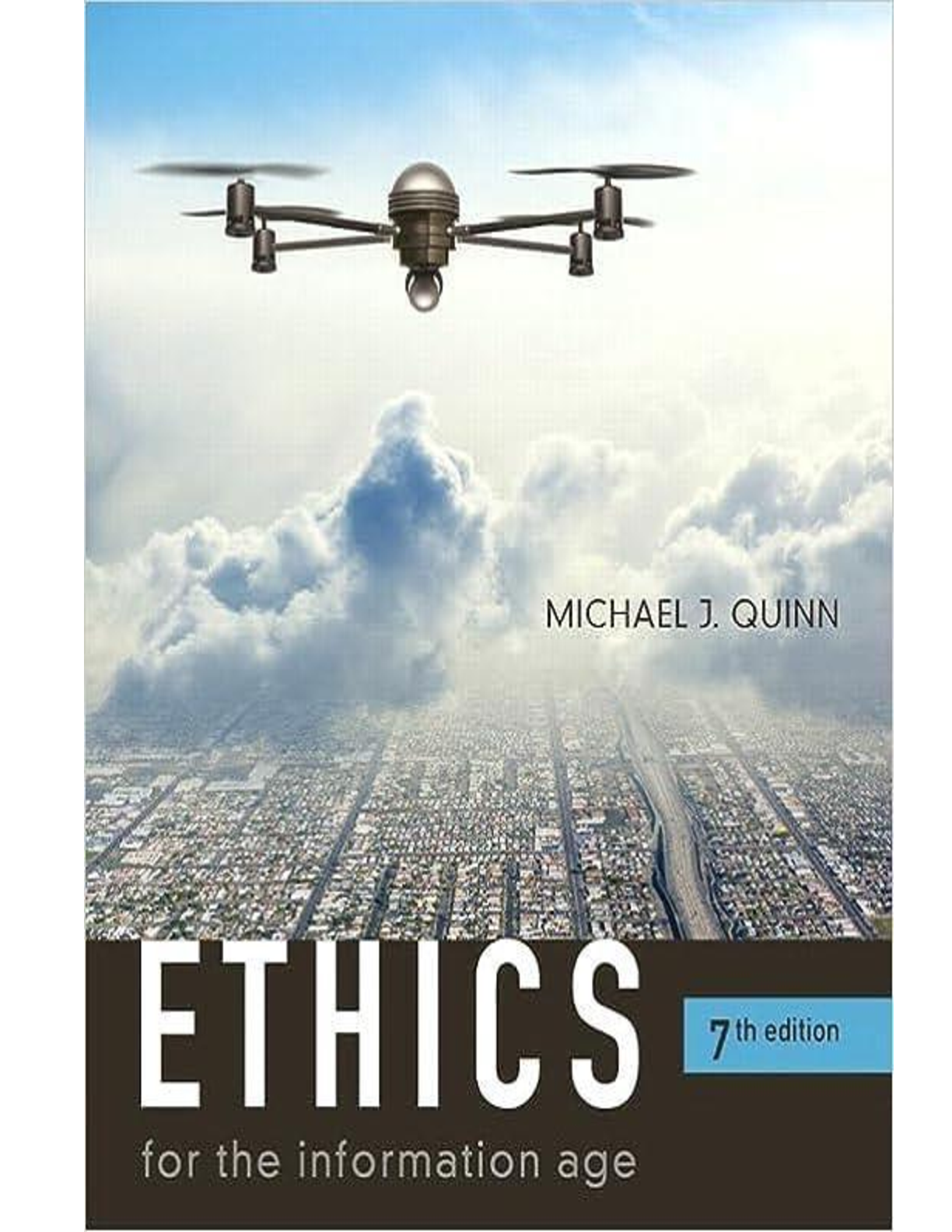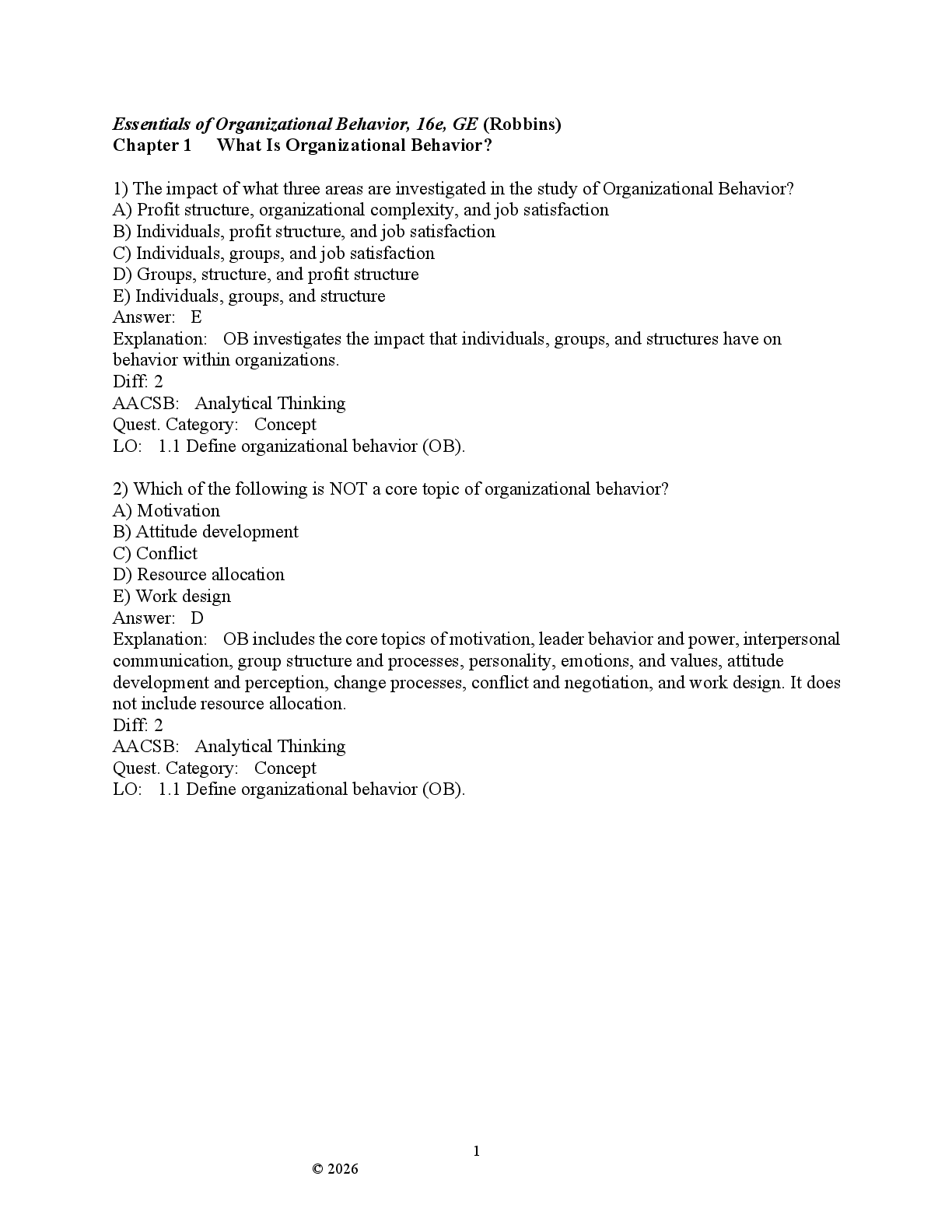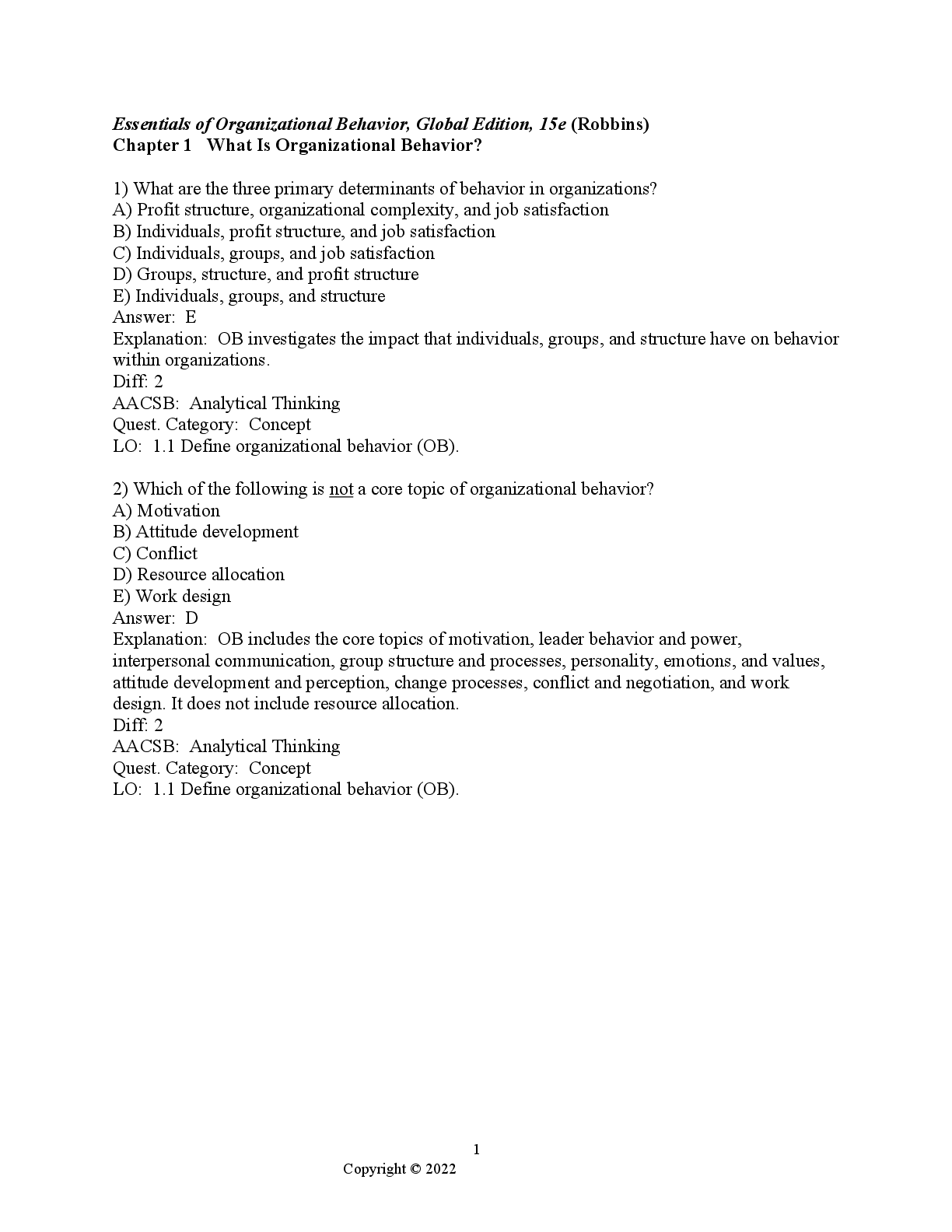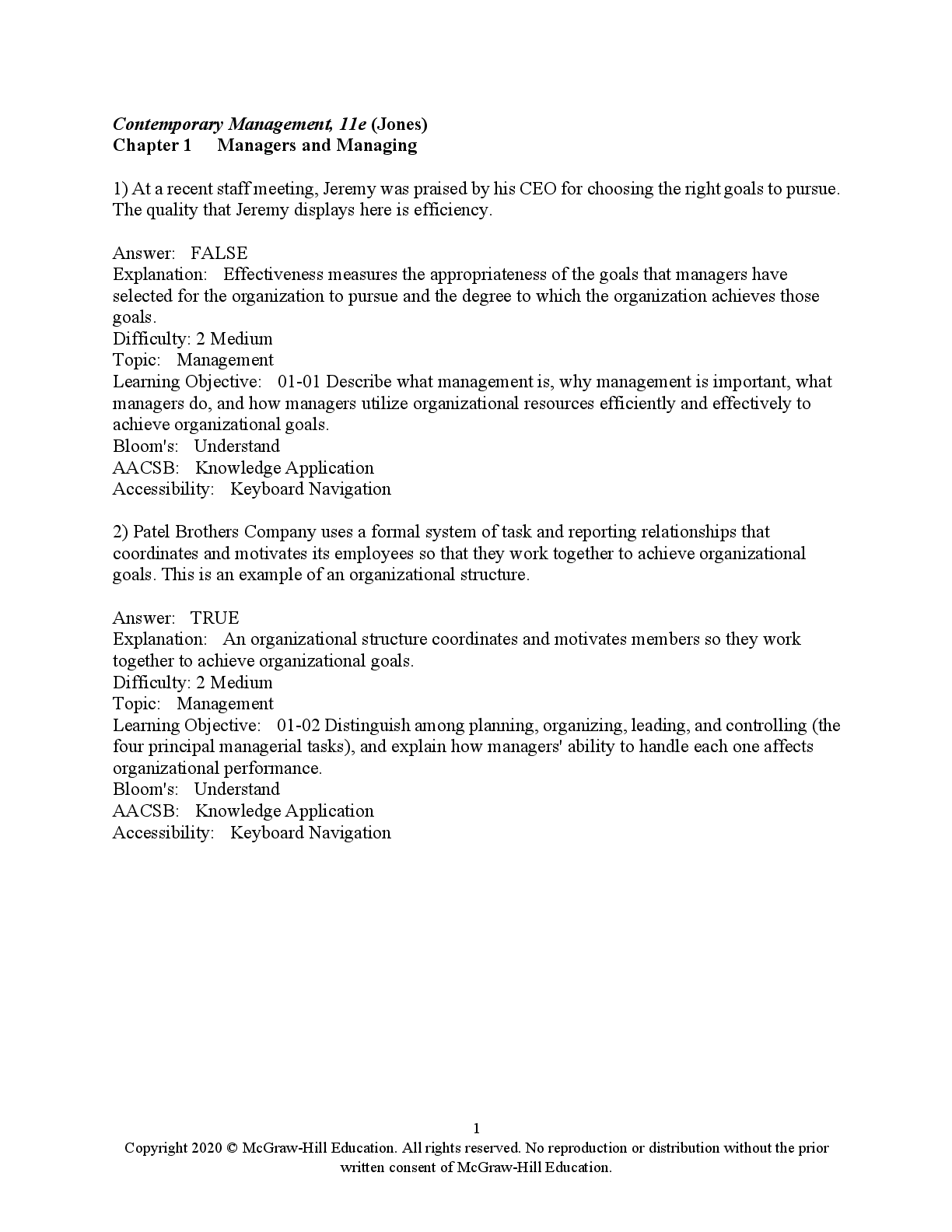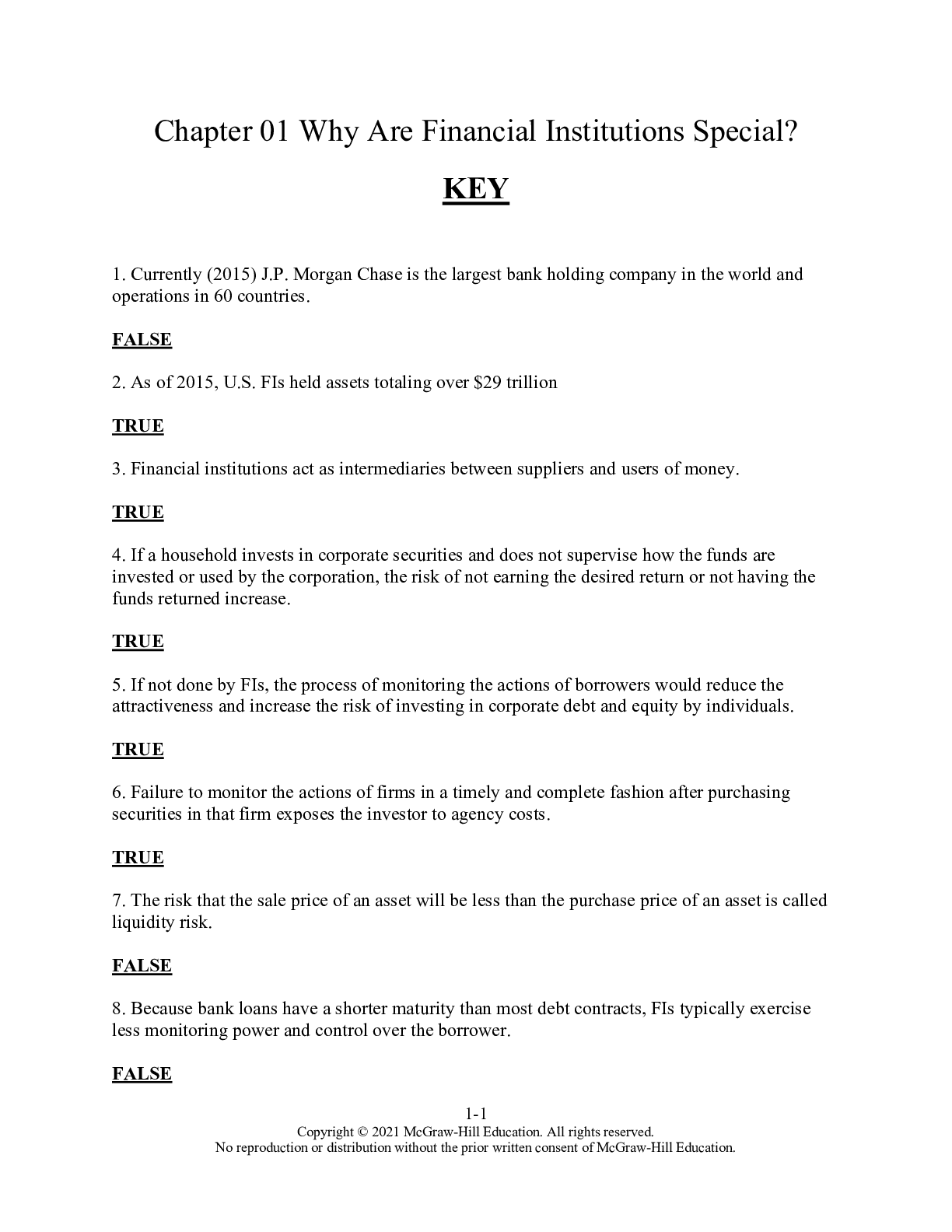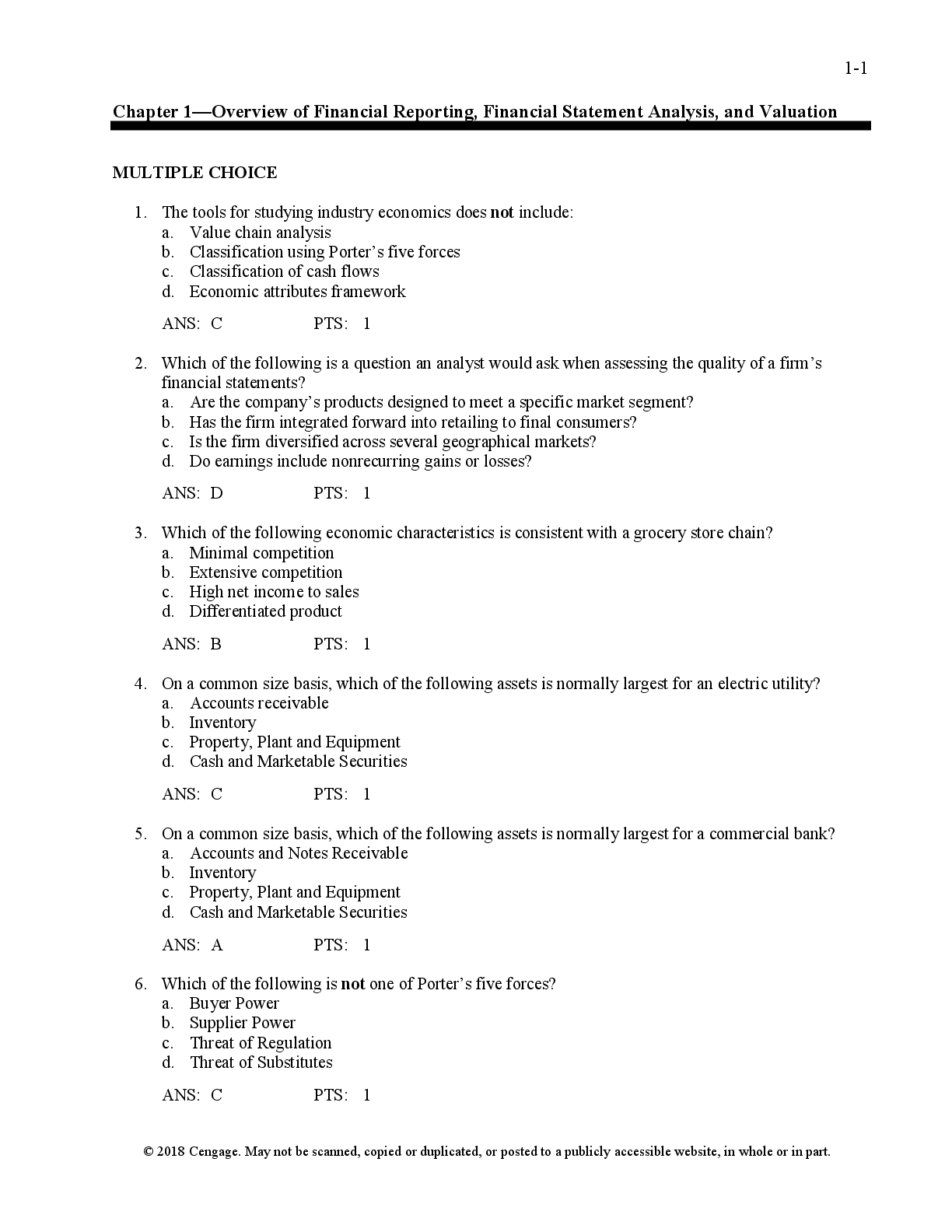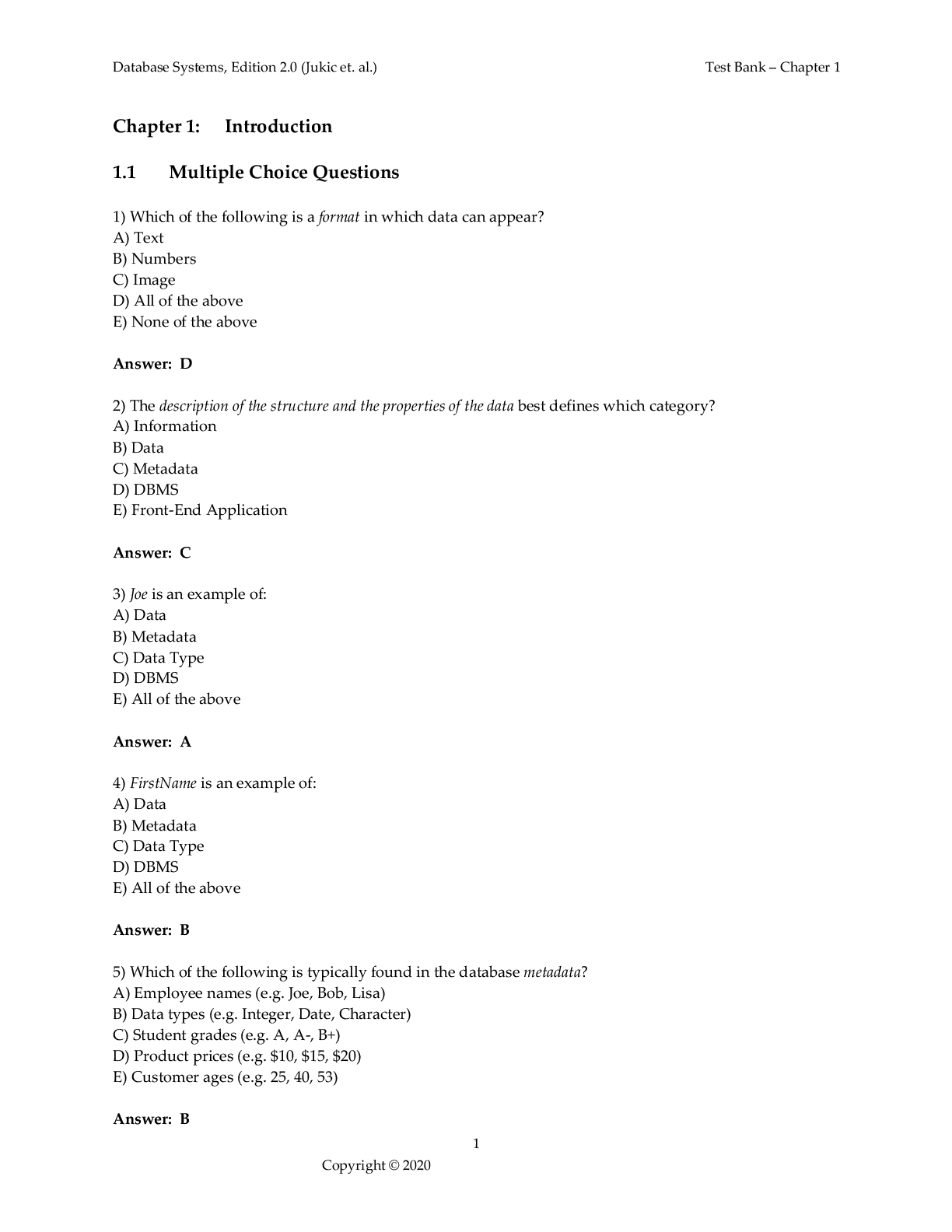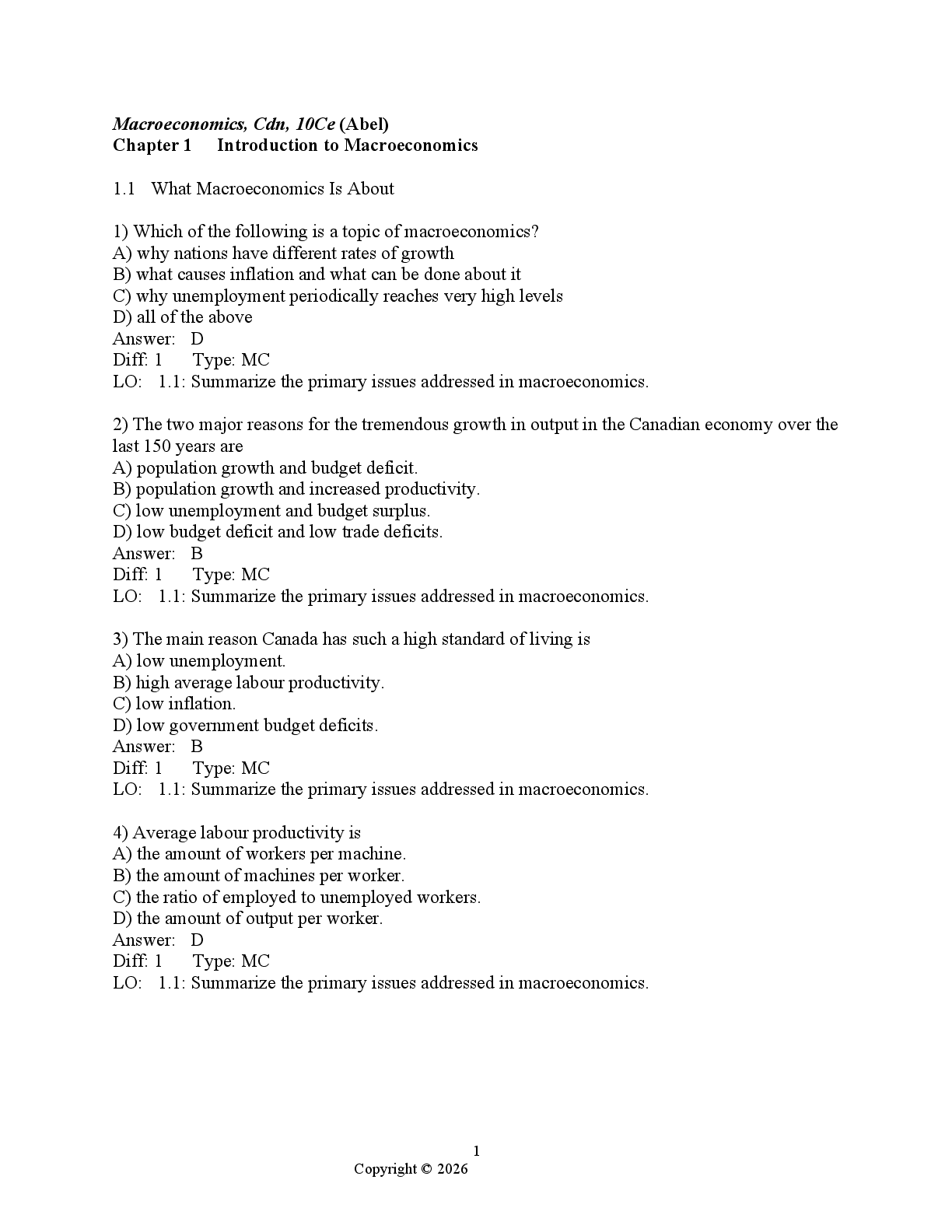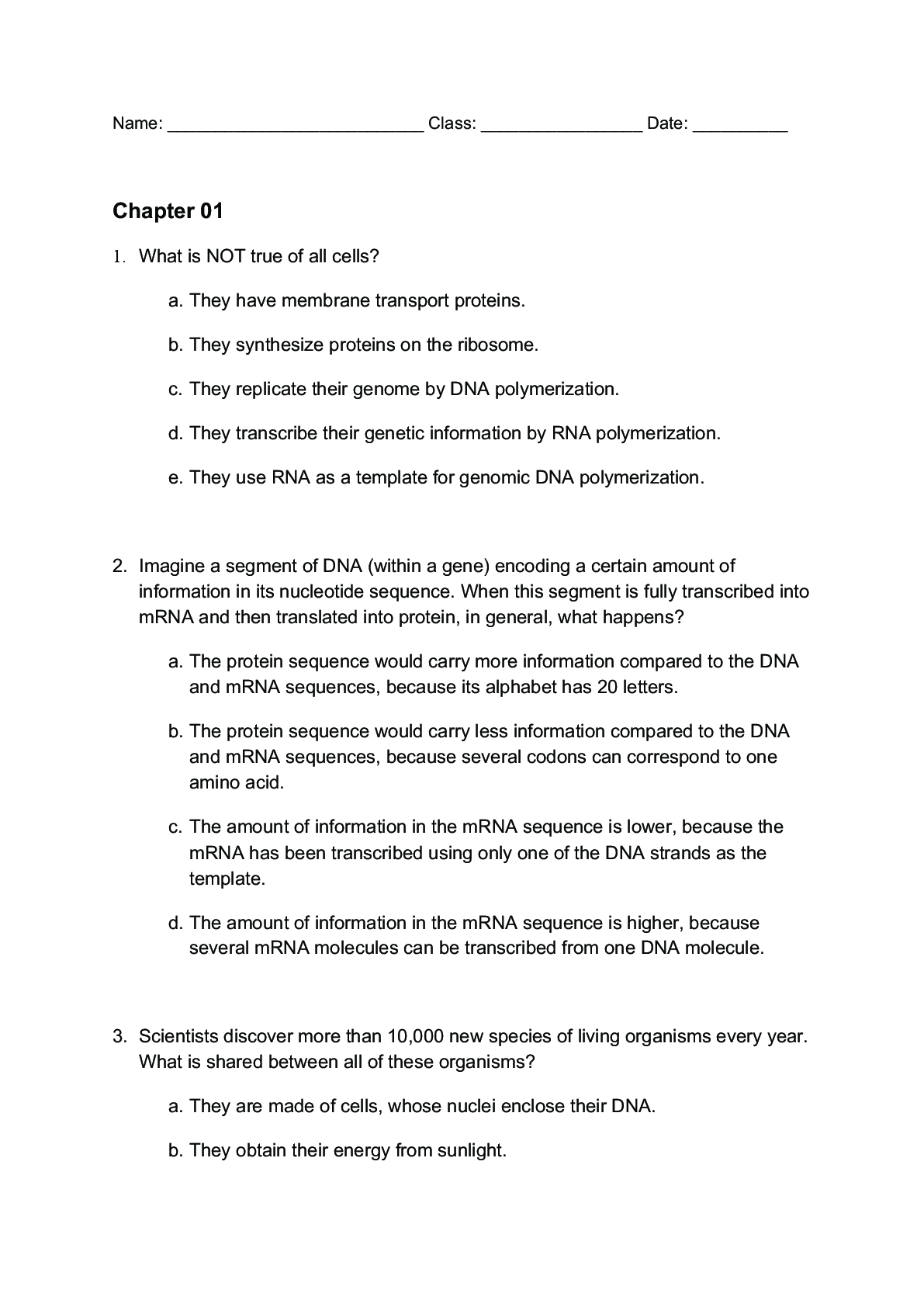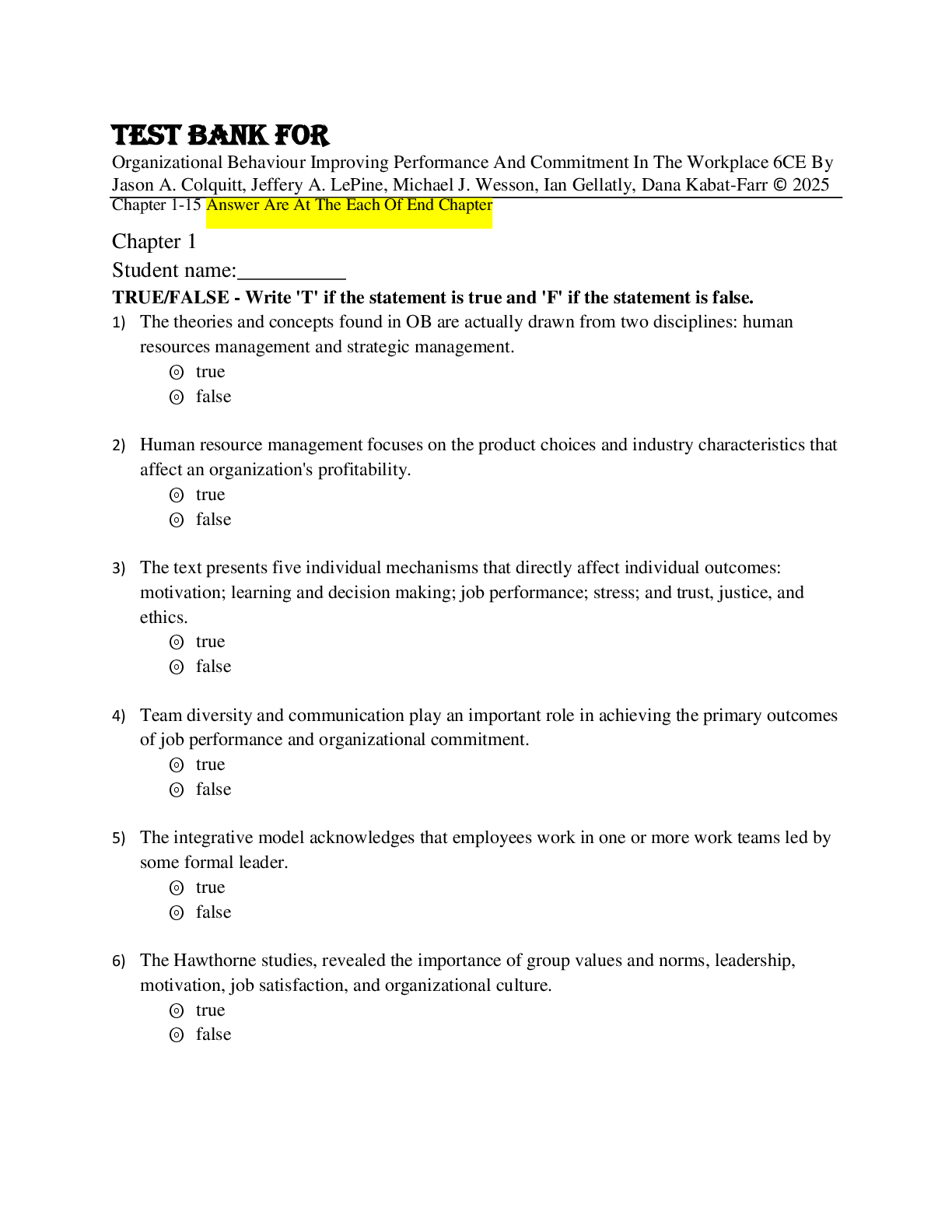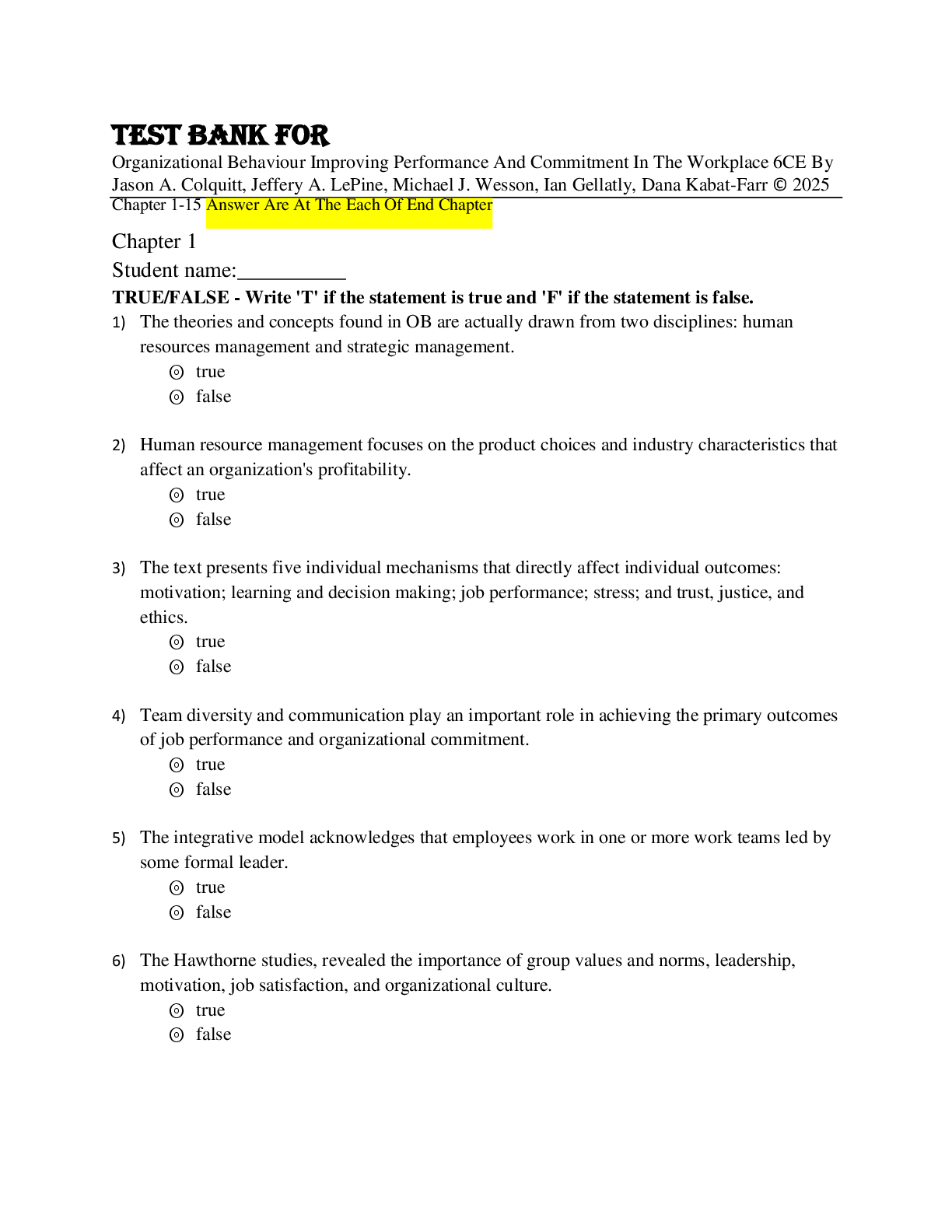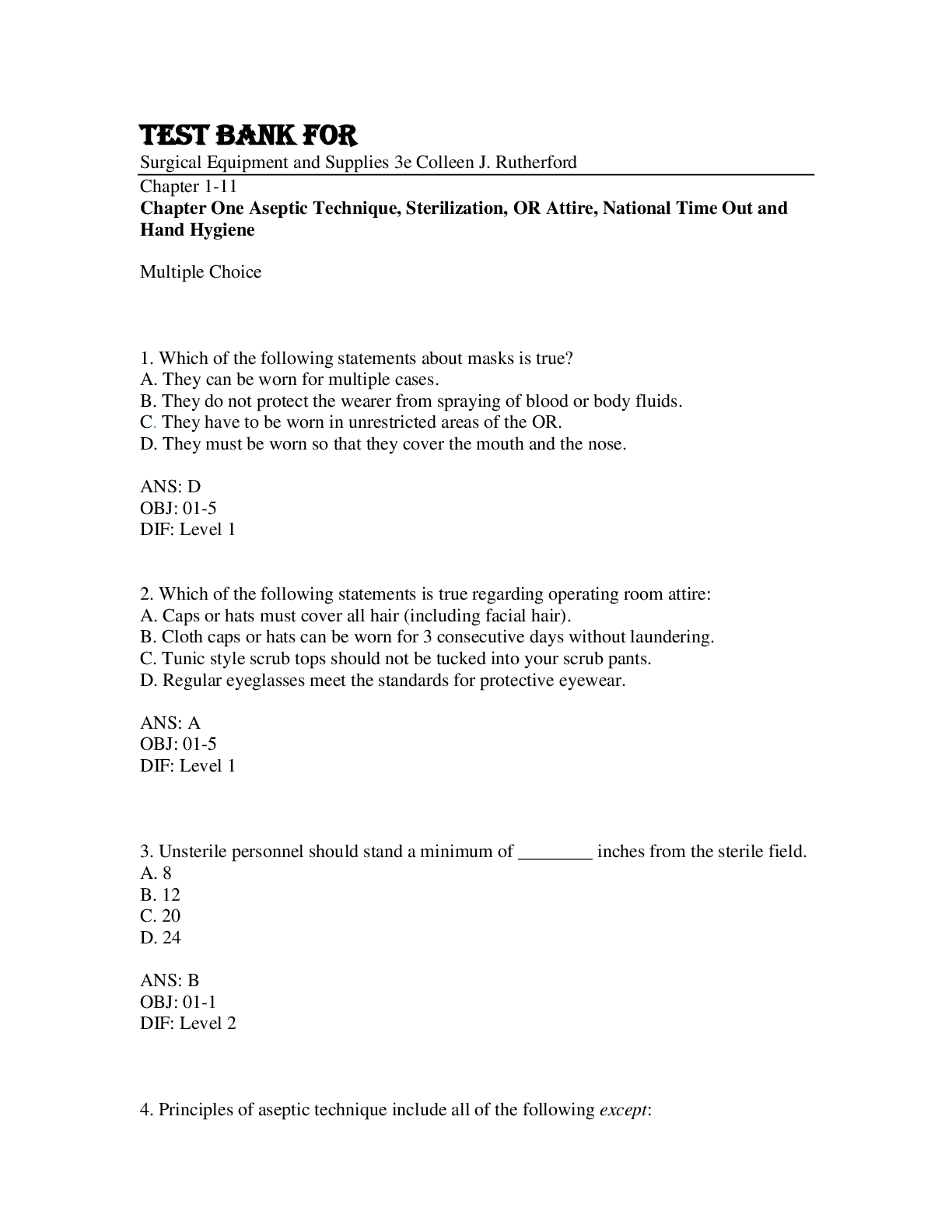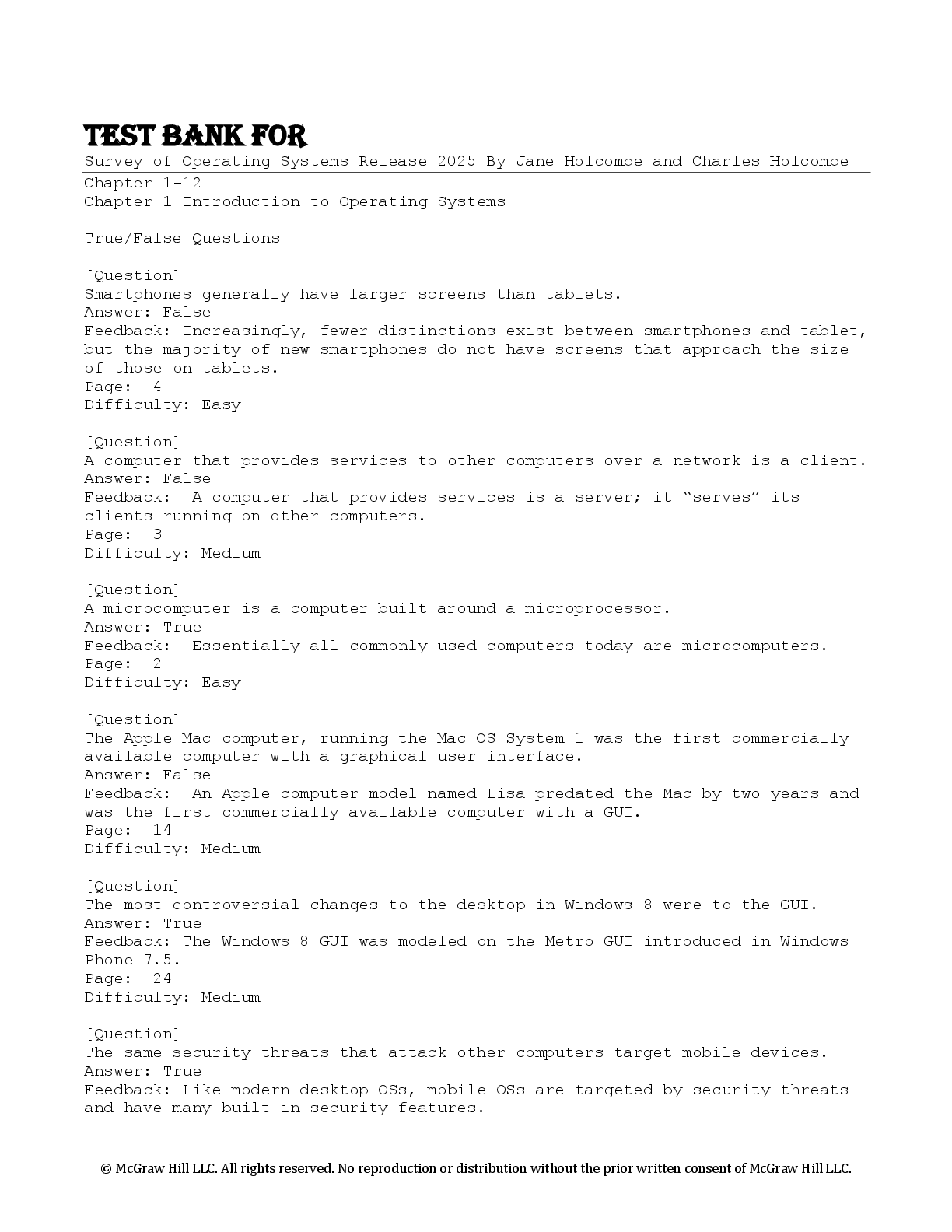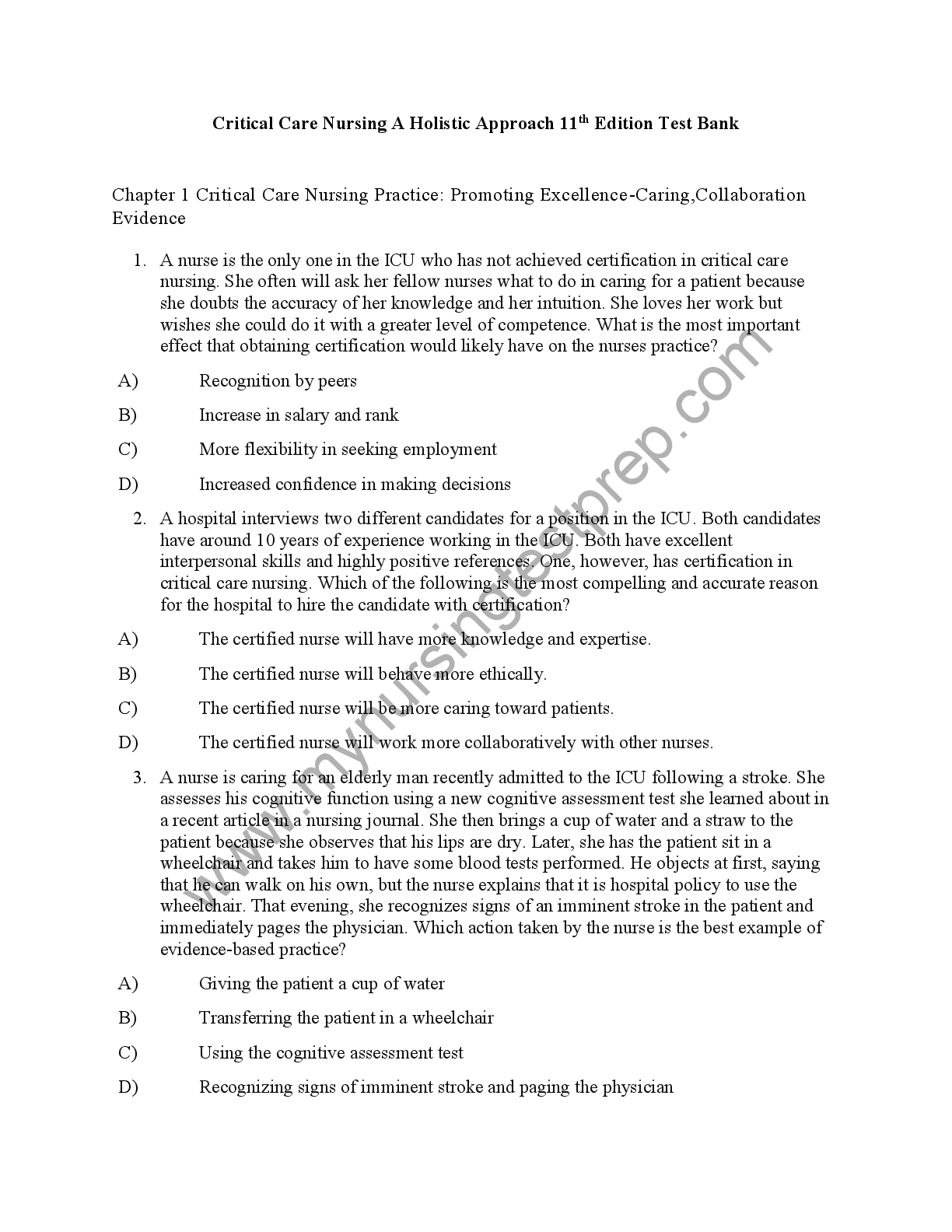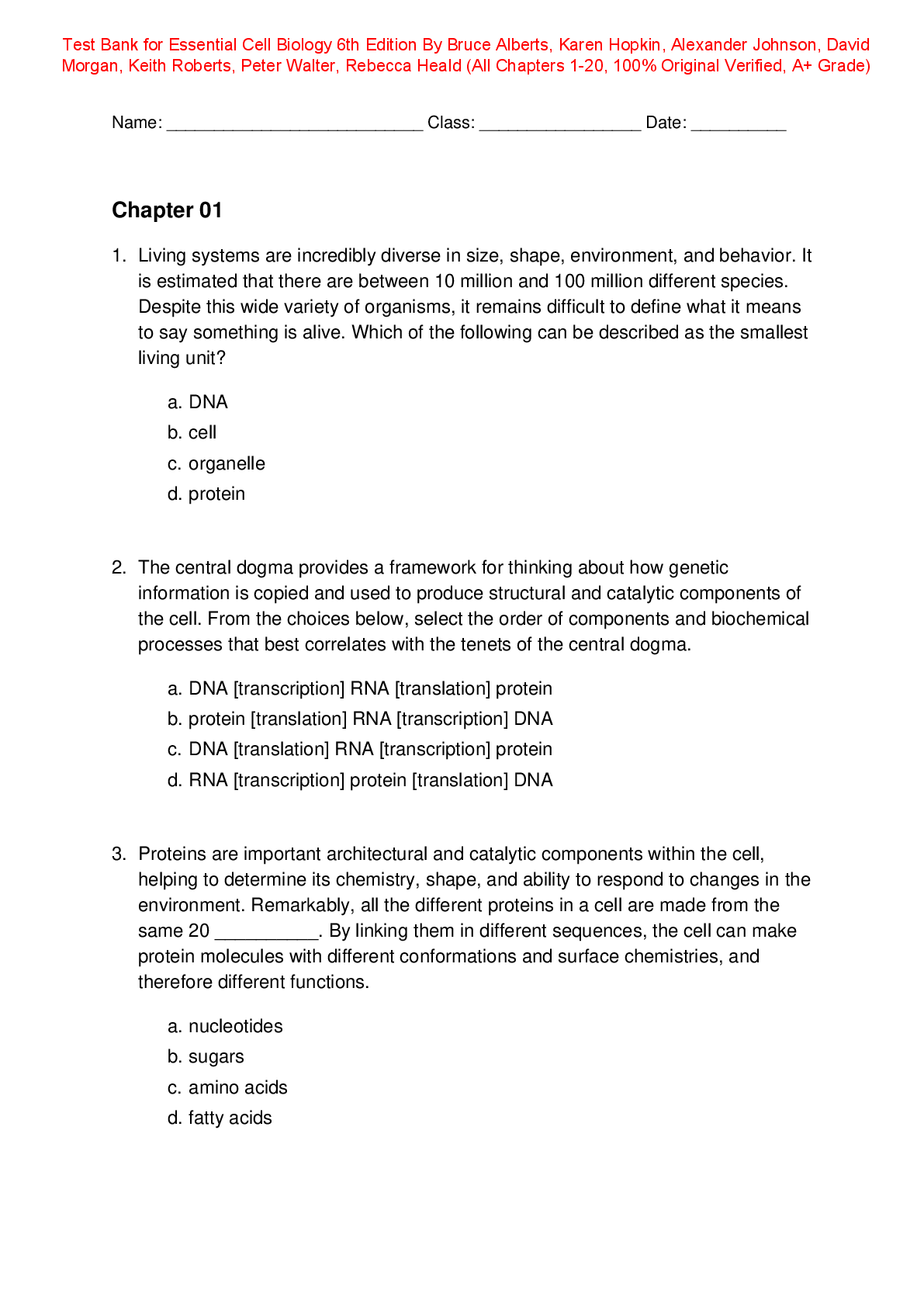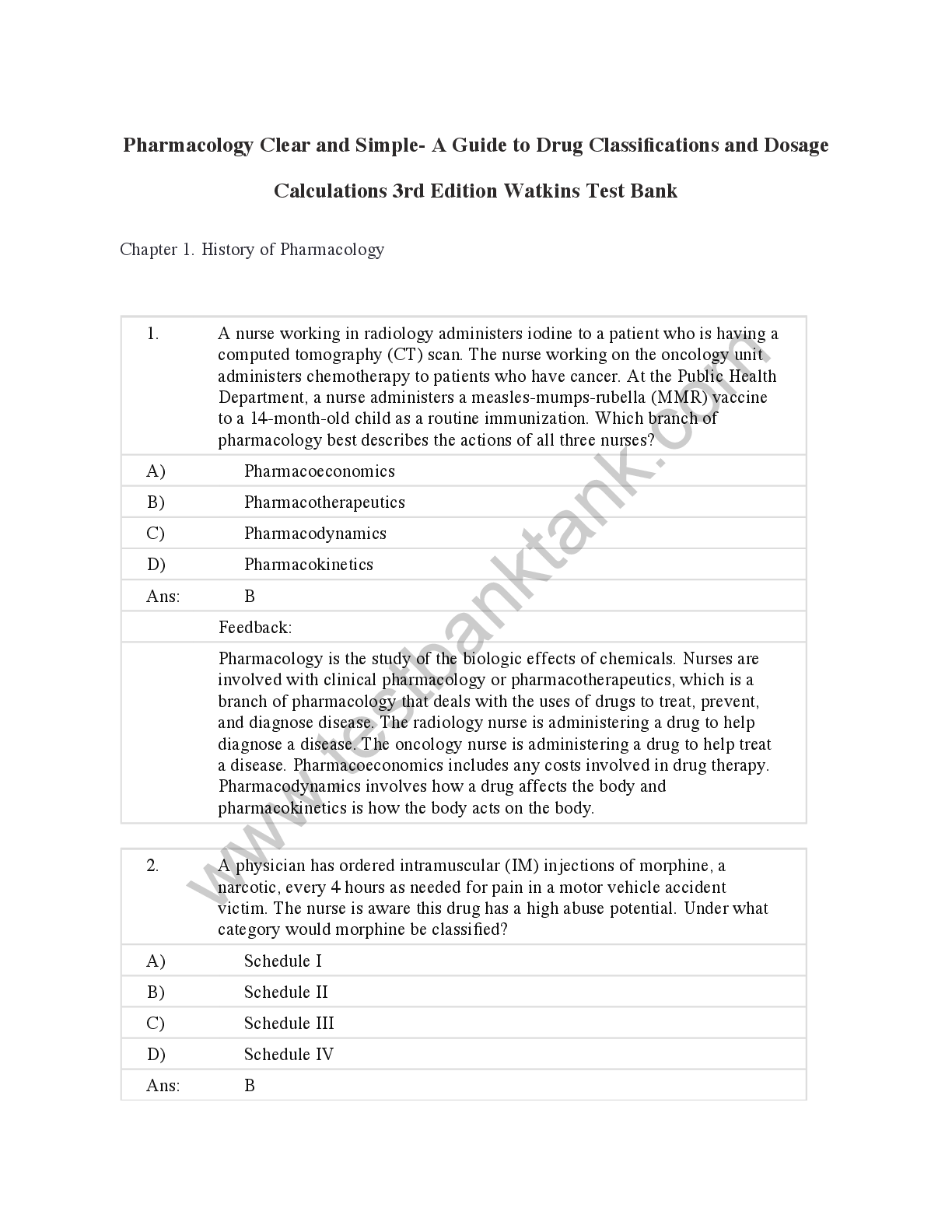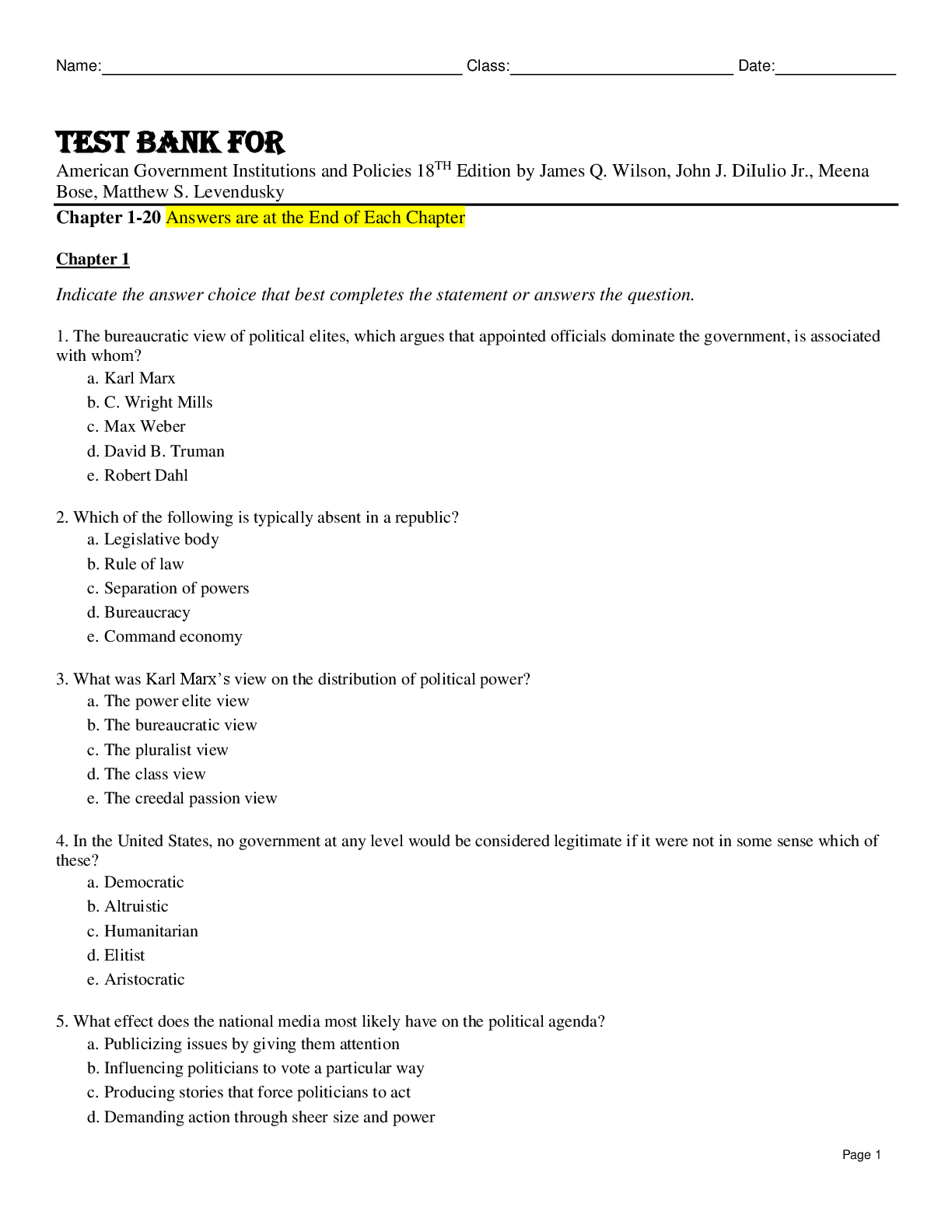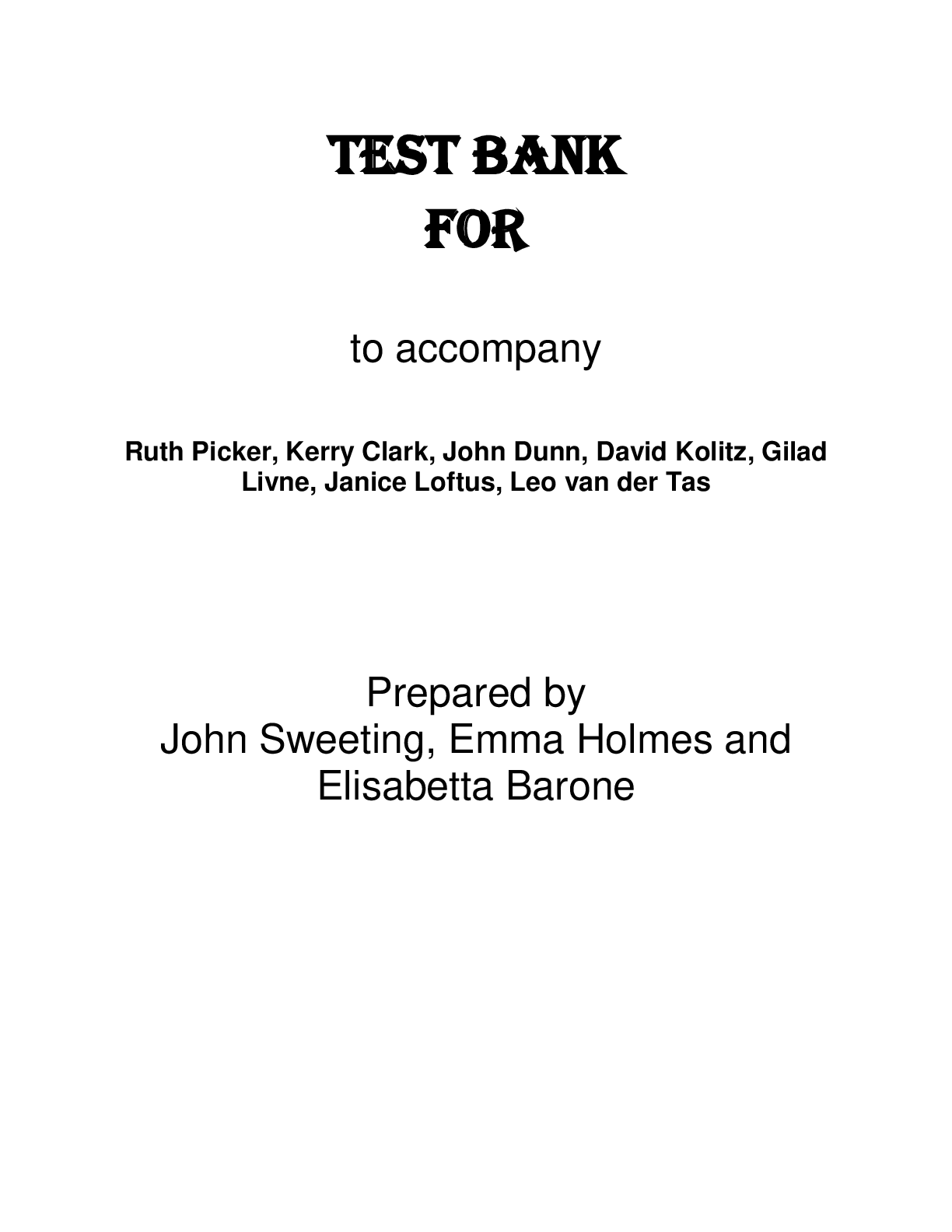Introduction to Physical Anthropology, 15th Edition by Jurmain, Kilgore and Trevathan | TEST BANK
Document Content and Description Below
Introduction to Physical Anthropology, 15th Edition by Jurmain, Kilgore and Trevathan | TEST BANK
Full chapters included
Chapter 1: Introduction to Physical Anthropology
The Human Connection
Bio
...
cultural Evolution
What Is Anthropology?
Cultural Anthropology
Linguistic Anthropology
Archaeology
Physical Anthropology
Applied Anthropology
Physical Anthropology and the Scientific Method
The Anthropological Perspective
A Closer: Look Forensic Anthropology in Practice
Summary of Main Topics
Critical Thinking Questions
Chapter 2: The Development of Evolutionary Theory
A Brief History of Evolutionary Thought
The Scientific Revolution
Precursors of the Theory of Evolution
The Discovery of Natural Selection
In Darwin’s Shadow
Natural Selection
Natural Selection in Action
Natural Selection and Reproductive Success
Constraints on Nineteenth-Century Evolutionary Theory
Opposition to Evolution Today
A Brief History of Opposition to Evolution in the United States
At a Glance: The Mechanism of Natural Selection
Summary of Main Topics
Critical Thinking Questions
Chapter 3: The Biological Basis of Life
Cells
From DNA to Protein
DNA Structure
A Closer Look: Rosalind Franklin: The Fourth (but Invisible) Member of the Double Helix Team
DNA Replication
Protein Synthesis
What Is a Gene?
A Closer Look Noncoding DNA—Not Junk After All
Regulatory Genes
At a Glance: Coding and Noncoding DNA
Mutation: When Genes Change
Cell Division
Chromosomes
Karyotyping Chromosomes
Mitosis
Meiosis
New Frontiers
How Do We Know?
Summary of Main Topics
Critical Thinking Questions
Chapter 4: Heredity and Evolution
The Genetic Principles Discovered by Mendel
Segregation
Dominance and Recessiveness
Independent Assortment
Mendelian Inheritance in Humans
Misconceptions about Dominance and Recessiveness
Patterns of Mendelian Inheritance
Non-Mendelian Inheritance
Polygenic Inheritance
At a Glance: Mendelian vs. Polygenic Traits
Mitochondrial Inheritance
Pleiotropy
Genetic and Environmental Factors
Modern Evolutionary Theory
The Modern Synthesis
A Current Definition of Evolution
Factors That Produce and Redistribute Variation
Mutation
Gene Flow
Genetic Drift and Founder Effect
Natural Selection Is Directional and Acts on Variation
Review of Genetics and Evolutionary Factors
How Do We Know?
Summary of Main Topics
Critical Thinking Questions
Chapter 5: Macroevolution: Processes of Vertebrate and Mammalian Evolution
How We Connect: Discovering the Place of Humans in the Natural World
Principles of Classification
Making Connections: Constructing Classifications and Interpreting Evolutionary Relationships
Comparing Evolutionary Systematics with Cladistics
A Closer Look Evo-Devo: The Evolution Revolution
An Example of Cladistic Analysis: The Evolutionary History of Cars and Trucks
Using Cladistics to Interpret Organisms
Definition of Species
At a Glance: Comparing Two Approaches to Interpretation of Evolutionary Relationships
Interpreting Species and Other Groupsin the Fossil Record
Recognition of Fossil Species
Recognition of Fossil Genera
What Are Fossils and How Do They Form?
Humans Are Vertebrates: Distant Connections through Geological Time
A Closer Look Deep Time
Humans Are Also Mammals: Closer Connections
Processes of Macroevolution
Adaptive Radiation
Generalized and Specialized Characteristics
Working Together: Microevolution and Macroevolution
How Do We Know?
Summary of Main Topics
Critical Thinking Questions
Chapter 6: Survey of the Living Primates
Primate Characteristics
Limbs and Locomotion
Dentition and Diet
The Senses and the Brain
Maturation, Learning, and Behavior
A Closer Look Primate Cranial Anatomy
Primate Adaptations
Evolutionary Factors
Geographical Distribution and Habitats
Diet and Teeth
Locomotion
Primate Classification
A Survey of the Living Nonhuman Primates
Lemurs and Lorises
Tarsiers
Anthropoids: Monkeys, Apes, and Humans
Hominoids: Apes and Humans
Endangered Primates
A Closer Look: Aye-Ayes: Victims of Derived Traits and Superstition
The Bushmeat Trade
How Do We Know?
Summary of Main Topics
Critical Thinking Questions
Chapter 7: Primate Behavior
The Evolution of Behavior
Some Factors That Influence Social Structure
A Closer Look: Types of Nonhuman Primate Social Groups
Why Be Social?
Primate Social Behavior
Dominance
At a Glance: Primate Social Strategies
Communication
Aggressive and Affiliative Behaviors within Groups
Reproduction and Reproductive Behaviors
Reproductive Strategies
Sexual Selection
Is Infanticide a Reproductive Strategy?
Mothers, Fathers, and Infants
Nonhuman Primate Models for the Evolution of Human Behavior
Brain and Body Size
Language
The Evolution of Language
Primate Cultural Behavior
At a Glance Evolution of Human Language
Conflict between Groups
Prosocial Behaviors: Affiliation, Altruism, and Cooperation
Altruism
The Primate Continuum
How Do We Know?
Summary of Main Topics
Critical Thinking Questions
Chapter 8: Overview of the Fossil Primates
Background to Primate Evolution: Late Mesozoic
Primate Origins
A Closer Look: Building Family Trees from Genes
Made to Order: Archaic Primates
Eocene Euprimates
Lemur Connections? The Adapoids
Closer Connections to Living Primates:The Evolution of True Lemurs and Lorises
At a Glance: Key Early Primate Names
Tarsier Connections? The Omomyoids
Evolution of True Tarsiers
Eocene and Oligocene Early Anthropoids
A Closer Look: Primate Diversity in the Fayum
Oligocene Primates
True Anthropoids
Early Platyrrhines: New World Anthropoids
A Closer Look: Island Hopping and Primate Evolution
Miocene Primates
Monkeying Around
Aping Monkeys
At a Glance: Key Early Anthropoid Names
True Apes
At a Glance: Key Fossil Ape Names
Evolution of Extant Hominoids
Hylobatids: The Lesser Apes
The African Great Apes
Asia’s Lone Great Ape
How Do We Know?
Summary of Main Topics
Critical Thinking Questions
Chapter 9: Paleoanthropology: Reconstructing Early Hominin Behavior and Ecology
Understanding Our Direct Evolutionary Connections: What’s a Hominin?
What’s in a Name?
Biocultural Evolution: The Human Capacity for Culture
Discovering Human Evolution: The Science of Paleoanthropology
A Closer Look: What Were Early Hominins Doing, and How Do We Know
Connecting the Dots through Time: Paleoanthropological Dating Methods
A Closer Look: Chronometric Dating Estimates
Experimental Archaeology
Stone Tool (Lithic) Technology
Analysis of Bone
Reconstruction of Early Hominin Environments and Behavior
Why Did Hominins Become Bipedal?
How Do We Know?
Summary of Main Topics
Critical Thinking Questions
Chapter 10: Hominin Origins in Africa
Walking the Walk: The Bipedal Adaptation
The Mechanics of Walking on Two Legs
A Closer Look: Major Features of Bipedal Locomotion
Digging for Connections: Early Hominins from Africa
Pre-Australopiths (6.01 to 4.4 mya)
Australopiths (4.2 to 1.2 mya)
At a Glance: Key Pre-Australopith Discoveries
A Closer Look: Cranial Capacity
A Contemporaneous and Very DifferentKind of Hominin
Later More Derived Australopiths (3.0 to 1.2 mya)
New Connections: A Transitional Australopith?
Closer Connections: Early Homo (2.0 to 1.4 mya)
Interpretations: What Does It All Mean?
Seeing the Big Picture: Adaptive Patterns of Early African Hominins
How Do We Know?
Summary of Main Topics
Critical Thinking Questions
Chapter 11: The First Dispersal of the Genus Homo: Homo erectus and Contemporaries
A New Kind of Hominin
The Morphology of Homo erectus
Body Size
Brain Size
Cranial Shape
The Geographic Range of Homo erectus
The First Homo erectus: Homo erectus from Africa
At a Glance: Key Homo erectus Discoveries from Africa
A New Hominin Discovery in South Africa
Who Were the Earliest African Emigrants?
Homo erectus from Indonesia
Homo erectus from China
A Closer Look: In Search of Ancient Human Ancestors—and a Little Shade
A Closer Look: Dragon Bone Hill: Cave Home or Hyena Den?
Asian and African Homo erectus: A Comparison
At a Glance: Key Homo erectus Discoveries from Asia
Later Homo erectus from Europe
At a Glance: Key Homo erectus and Contemporaneous Discoveries from Europe and Western Asia
Technological Trends During the Time of Homo erectus
Seeing the Connections: Interpretations of Homo erectus
Something New and Different: The “Little People”
How Do We Know?
Summary of Main Topics
Critical Thinking Questions
Chapter 12: Premodern Humans
When, Where, and What
The Pleistocene
Dispersal of Middle Pleistocene Hominins
Middle Pleistocene Hominins: Terminology
Premodern Humans of the Middle Pleistocene
Africa
At a Glance: Key Premodern Human (H. heidelbergensis) Fossils from Africa
Europe
Asia
At a Glance: Key Premodern Human (H. heidelbergensis) Fossils from Europe
A Review of Middle Pleistocene Evolution
At a Glance: Key Premodern Human (H. heidelbergensis) Fossils from Asia
Middle Pleistocene Culture
Neandertals: Premodern Humans of the Late Pleistocene
Western Europe
Central Europe
Western Asia
Central Asia
Surprising Connections: Another Contemporary Hominin?
At a Glance: Key Neandertal Fossil Discoveries
Culture of Neandertals
Technology
Subsistence
Speech and Symbolic Behavior
A Closer Look: The Evolution of Language
Burials
Molecular Connections: The Genetic Evidence
Neandertal DNA
A Closer Look Are They Human?
Seeing Close Human Connections: Understanding Diversity among Premodern Humans
How Do We Know?
Summary of Main Topics
Critical Thinking Questions
Chapter 13: The Origin and Dispersal of Modern Humans
Approaches to Understanding Modern Human Origins
The Regional Continuity Model: Multiregional Evolution
Replacement Models
At a Glance: Scenarios of Modern Human Origins
At a Glance: Genetic Relationships among Modern Humans, Denisovans, and Neandertals
The Earliest Discoveries of Modern Humans
Africa
The Near East
At a Glance: Key Early Modern Homo sapiens Discoveries from Africa and the Near East
Asia
Australia
Central Europe
Western Europe
At a Glance: Key Early Modern Homo sapiens Discoveries from Europe and Asia
Technology and Art in the Upper Paleolithic
Europe
Africa
A Closer Look: Maybe You Can Take It with You
Summary of Upper Paleolithic Culture
How Do We Know?
Summary of Main Topics
Critical Thinking Questions
Chapter 14: Modern Human Biology: Patterns of Variation
Historical Views of Human Variation
The Concept of Race
A Closer Look: Racial Purity: A False and Dangerous Ideology
Contemporary Interpretations of Human Variation
Human Polymorphisms
Polymorphisms at the DNA Level
At a Glance: Genetic Polymorphisms Used to Study Human Variation
A Closer Look: What DNA Tells Us about Ancient Human Migrations
Population Genetics
At a Glance: Population Genetics Research
Calculating Allele Frequencies
A Closer Look: Calculating Allele Frequencies: PTC Tasting in a Hypothetical Population
Evolution in Action: Modern Human Populations
Human Biocultural Evolution
How Do We Know?
Summary of Main Topics
Critical Thinking Questions
Chapter 15: Modern Human Biology: Patterns of Adaptation
The Adaptive Significance of Human Variation
Solar Radiation and Skin Color
The Thermal Environment
A Closer Look: Skin Cancer and UV Radiation
High Altitude
Infectious Disease
At a Glance: Zoonoses and Human Infectious Disease
The Continuing Impact of Infectious Disease
Human Skeletal Biology: What Bones Can Tell Us about Ancient Diseases, Trauma, and Lifestyles
Evidence of Prehistoric Diseases
Reconstruction of Prehistoric Behavioral Patterns
How Do We Know?
Summary of Main Topics
Critical Thinking Questions
Chapter 16: Legacies of Human Evolutionary History: Effects on the Life Course
Evolved Biology and Contemporary Lifestyles—Is There a Mismatch?
Biocultural Evolution and the Life Course
Diet and Nutrition through the Life Course
Too Much and Too Little
At a Glance: Diet, Lifestyle, and Consequences
Other Factors Influencing Growth and Development: Genes, Environment, and Hormones
Life History Theory and the Human Life Course
Pregnancy, Birth, Infancy, and Childhood
Onset of Reproductive Function in Humans
Decline in Reproductive Function
Aging and Longevity
Are We Still Evolving?
How Do We Know?
Summary of Main Topics
Critical Thinking Questions
Chapter 17: The Human Disconnection
Human Impacts on the Planet and on Other Life-Forms
Humans and the Impact of Culture
Global Climate Change
Public Perceptions of Climate Change
Earth’s Shrinking Polar Ice
Impact on Biodiversity
Acceleration of Evolutionary Processes
Looking for Solutions
Is There Any Good News?
How Do We Know?
Summary of Main Topics
Critical Thinking Questions
Appendix A: Atlas of Primate Skeletal Anatomy
Appendix B: Sexing and Aging the Skeleton
Glossary
References
Index
[Show More]
Last updated: 1 year ago
Preview 10 out of 285 pages

